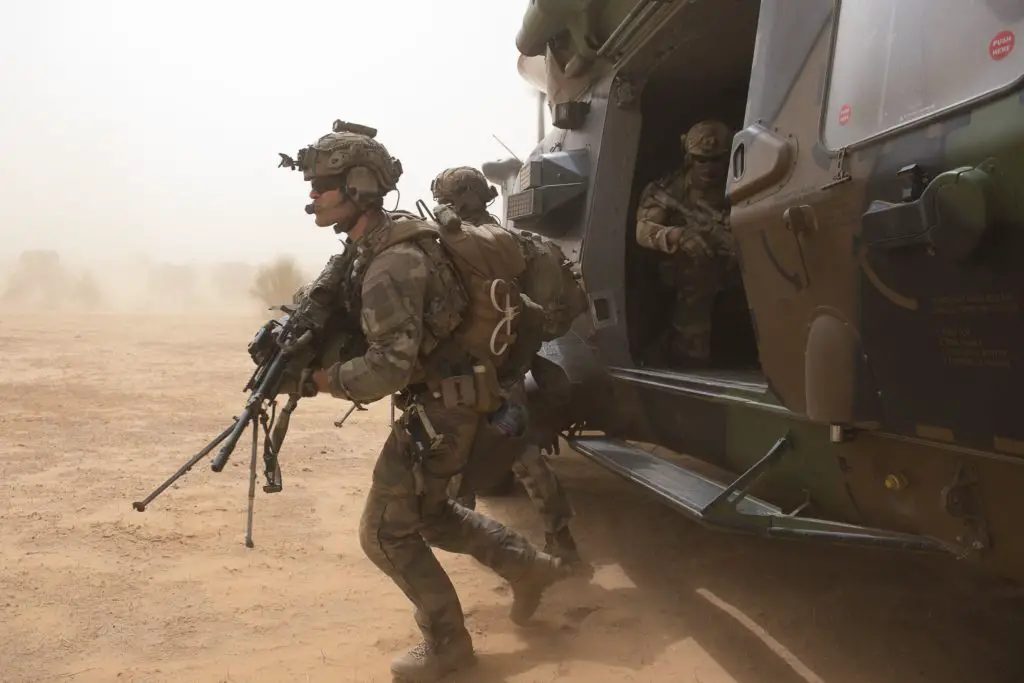More than 50 “terrorists” were “put out of action” in a series of operations conducted in Mali by forces deployed to Operation Barkhane between December 20 and January 5, the French Armed Forces Ministry said.
The first operation between December 20 and 21 had previously been announced by French President Emmanuel Macron.
In a helicopter-borne assault on a large camp in a densely forested area of central Mali’s Mopti region, “33 terrorists were neutralized by several dozen commandos supported by Tigre helicopters in fighting that lasted several hours,” the ministry said in a Thursday, January 9 release.
Previous AFP reporting put the location of the commando raid in the Ouagadou forest, 150 km (90 miles) from Mopti town.
At the end of the day on December 21, commandoes were attacked as they searched the area. A Reaper drone that was then supporting the operation conducted an airstrike “to neutralize seven GAT [armed terrorist group] fighters who had infiltrated by motorcycle.”
This was the first airstrike carried out by a French armed drone, and came just two days after Armed Forces Minister Florence Parly announced that the testing of remotely-piloted drones for armed operations was completed. France has a total of five Reaper drones. The three MQ-9 Reapers based near Niger’s capital Niamey are each capable of carrying two GBU-12 Paveway II 500-pound laser-guided bombs. France is due to receive six more Reapers that will be capable of firing Lockheed Martin’s Hellfire air-to-surface missiles in 2020, and the fleet is set to increase to 24 by 2030. Parly made the decision to arm France’s surveillance drones in September 2017.
A Malian gendarme and a member of the Malian Armed Forces (FAMa) who had been held hostage were freed, and “several vehicles, including one equipped with an anti-aircraft gun,” and a large quantity of weapons were ‘neutralized,’ the release said.
Another helicopter-borne assault was conducted on December 30, when a “gathering of several terrorists was spotted,” also in the Mopti region.
Supported by Tigre and Gazelle helicopters, Barkhane commandos put six “terrorists” out of action, while “three armed individuals fleeing the area” were struck by a Reaper drone.
A third operation was carried out overnight on January 4 to 5, this time in the Serma area. An airstrike conducted by a Mirage 2000 jet was followed by another helicopter-borne assault against a “GAT training site.” A dozen fighters were “neutralized” and around 15 motorcycles were destroyed.
Operation Barkhane
Many armed groups including Islamic State are active in Mali and the wider Sahel region, but the majority of attacks are attributed to JNIM, which formed in March 2017 from a merger of several smaller groups. JNIM’s leadership has pledged allegiance to al-Qaeda leader Ayman al-Zawahiri.
Mali has been struggling to contain a complex insurgency since 2012, when a Tuareg separatist uprising was exploited by Islamist extremists who took key cities in the desert north.
France began its Operation Serval military intervention in its former colony early the next year, driving the jihadists from the towns, and the MINUSMA peacekeeping force was then established.
But the militant groups have morphed into more nimble formations operating in rural areas, and the insurgency has gradually spread to central and southern regions of Mali and across the borders into neighboring Burkina Faso and Niger. Large swathes of Mali remain outside government control, and inter-ethnic bloodshed is a regular occurrence.
Serval evolved in August 2014 into Operation Barkhane, and roughly 4,500 French troops are deployed in the region, including around 2,700 soldiers in Mali. Barkhane focuses activity in insurgent-hit Mali, Niger and Burkina Faso, and troops work alongside other international operations, including the roughly 14,000-strong MINUSMA U.N. stabilization mission in Mali and the G5 Sahel Joint Force (FCG5S), a planned 4,500-strong joint counter-terrorism force comprising troops from Burkina Faso, Chad, Mali, Niger and Mauritania.
Barkhane has a growing international dimension, with European partners sending more troops and equipment. Denmark has deployed two helicopters and up to 70 troops to support Barkhane and Estonia is to almost double the size of its Barkhane contingent this year. Chinook helicopters from the United Kingdom currently support the operation.
France has also been trying to build international support for a new military force to work alongside Barkhane.
French plans for a new international special operations task force for the Sahel were first reported in early October, and on November 5, Parly said that France expected the new force – dubbed “Takuba” – to deploy in Mali by 2020.
Estonia was the first partner to confirm a special operations forces deployment to Takuba. A defense ministry spokesperson told The Defense Post that special forces will deploy to Mali in the second half of 2020 and that force will ‘assist, advise and accompany’ the Malian Armed Forces. Belgium and the Czech Republic have also signaled that they will participate, but Germany has declined to join the task force.
President Macron and the presidents of the G5 Sahel group of states are due to meet on January 13 to discuss security and the presence of France-led forces in the region. In November, Macron said France was “confirming and consolidating its commitment” to the Sahel, noting that additional military resources would be forthcoming by early 2020, and that decisions would soon be announced on revamping the G5 Sahel Joint Force.
In November, senior officials said the United States is seeking a meeting of the Coalition against ISIS early in 2020 to focus on threats in West Africa and the Sahel.



